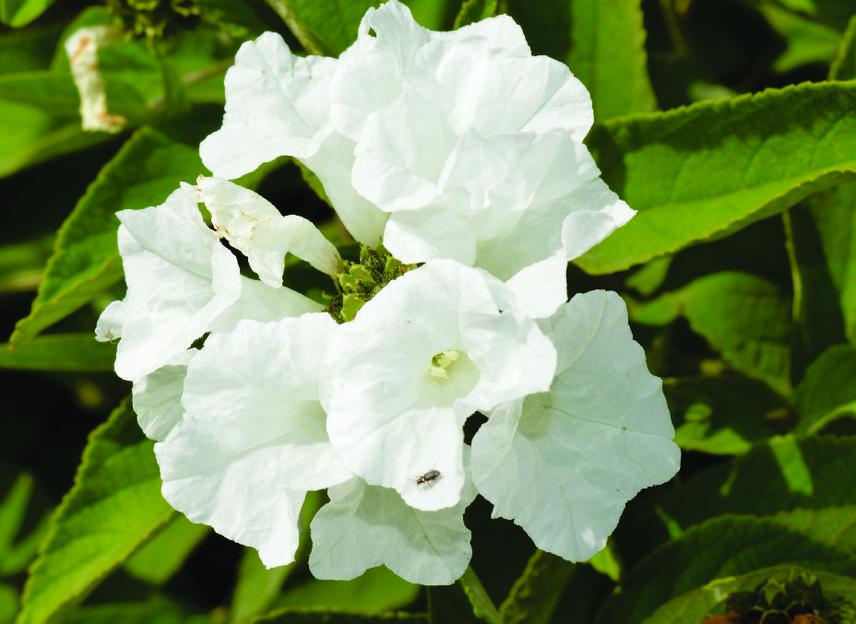Thaynara de Sousa Silva
Considering that the genus Varronia (Cordiaceae, Boraginales) has gone through recent changes in its constituency, its real diversity and the conservation status of 88% of its species are still unknown. At the same time, its representatives have been a growing target in pharmaceutical studies. Given this scenario, the present project proposes to contribute to the understanding of the evolution and conservation of the genus Varronia in the Neotropics (its centre of endemism) through phylogenetic, biogeographic and taxonomic studies, as an increase to the knowledge and the conservation of plant diversity, especially throughout this area of the planet.
A total of 100 neotropical species of Varronia is estimated, Brazil being one of the main centres of diversity along with Colombia and Mexico. However, in view of the recent constituency of Varronia at a generic level and the need for nomenclature updates, it is believed that the actual diversity of the genus is underestimated, being essential the recognition of new combinations and typifications, so that the species may be properly treated in floristic projects. The endemism of Varronia in the neotropics and in biodiversity hotspots, especially in Brazil, in counterpoint to the economic utility of several of its species combined with the gap in assessing the conservation status of almost 90% of them, strengthens the urgency needed of a robust classification and comprehensive review.

Varronia leucocephala (Moric.)J.S. Mill. ©Wesley Cordeiro.
From this study will be built, will be built a broad molecular phylogenetic analysis of the species of Varronia with the evaluation of diagnostic characters, taxonomic revision and anatomical study of the genus for Brazil.
Field activities, including collections 'in loco' and visits to national and foreign Herbaria will occur during the period from March to February 2018/2020, totalizing 24 months, in order to include the greatest number of plant specimens and collections. The methods for the development of the present study are commonly used in taxonomical, anatomical and phylogenetic research with other botanical groups.
The present study will elucidate the taxonomic and nomenclatural problems in the genre, contributing effectively with consistent data for the correct delineation of taxa, broadening the knowledge of neotropical flora. In addition, given the scarcity of knowledge of reproductive biology and ecological processes involving Varronia (probably due to the nomenclatural inconsistency in the group), systematic elucidation will contribute to the effective treatment of its species in ecological studies. The use of information obtained from the recognition of the Varronia species and its historical and biogeographical relationships in a broad context will increase the understanding of plant diversity and the distribution of organisms, as well as, highlight the need of attention for the conservation of the environments where they occur.
Header: Varronia dardani (Taroda) J.S. Mill., endemic specie of Brazil. ©Wesley Cordeiro